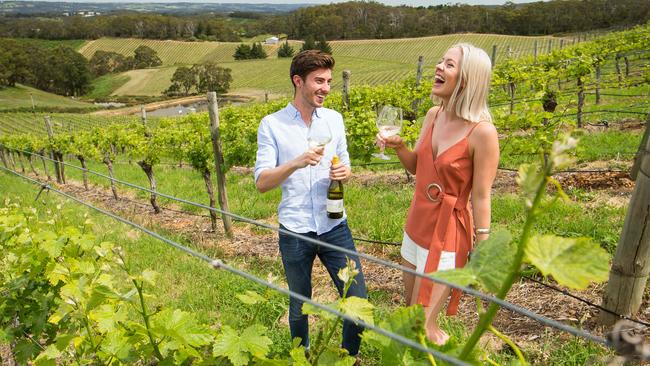Winemakers adopt Burgundy style for new wave chardonnays
Lean, leggy and with just a hint struck-match aroma, Australia’s new wave of chardonnays are gaining the advantage.

Lean, leggy and with just a hint of struck-match aroma, Australia’s new wave of chardonnays are gaining the advantage over long-dominant sauvignon blanc.
After years of heavy-hitting, oaky Australian chardonnays being deeply out of vogue, the nation’s vintners have moved towards elegant styles that reflect their French counterparts in Burgundy.
Student Grace Whyatt, 23, is one of the converts. “When I started drinking it was all about sauvignon blanc but now my friends and I only drink chardonnay,” she said. “Chardonnay is softer and dryer — I find sauvignon blanc too acidic.
“(Chardonnay) has always been the old-lady drink to me but I feel it’s really taking off with younger people now.”
Pike & Joyce winemaker Neil Pike has been making chardonnay since 2001 from his Adelaide Hills vineyard, where the cool climate and high elevation are perfect for the style.
“We never aimed to produce the buttery, rich style; we have been more influenced by our love of wines from Burgundy, where the acidity and the pureness of the fruit shines through,” Pike said.
Kay Chardonnay in the Adelaide Hills scored 92 points in the Halliday Chardonnay Challenge this year, with Penfolds’ Bin A, also from the Hills, taking top honours.
Wine Australia figures show chardonnay is now Australia’s most-planted white variety, with 214 square kilometres cultivated last year, surpassed only by shiraz and cabernet sauvignon vines.
However, despite resurgent popularity, chardonnay vineyard areas have shrunk by a third since 2007, as the wine industry moves away from bulk production to premium production.
About 376,339 tonnes of the chardonnay grape was crushed last year — 8 per cent up on the previous year — accounting for a little more than 20 per cent of national production.
Pike said modern Australian chardonnays had minimal intervention, about 13 per cent alcohol by volume, and some acidity and minerality.
“We’ve brought Old World techniques to the chardonnay cellar by doing things like fermenting dirty juice,” he said.
“They’ve been doing it for a long time in Europe and we know they will show the best in our wines and produce that flinty characteristic we are after.”
Australian Wine Research Institute research manager Simon Schmidt is sequencing genomes of different chardonnay vines to investigate their different flavours and fermentation performance
“Winemaking starts in a vineyard,” Mr Schmidt said. “Site selection is important but so is what you plant. While it’s true there is a modern, leaner style that is emerging, there is still a market for the more traditional buttery chardonnay of old — this is all about diversifying the style.”
James Halliday’s Top 100: See which wines made this year’s list in The Weekend Australian Magazine.


